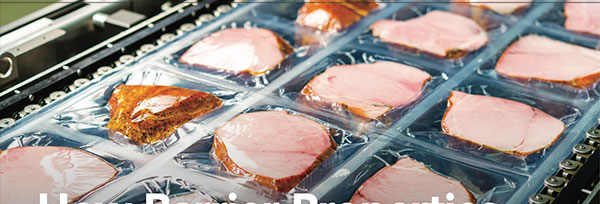How Barrier Properties Impact Your Barbecue and Beyond
- Published: August 07, 2023

By Rob Tiller, Managing Director, PennPac
With the summer months upon us, outdoor barbecues and family gatherings are the ultimate warm-weather activity. The grilling or roasting of various foods has evolved significantly since its beginnings in the 1500s, originally known as “barbacoa.” While there are many styles surrounding the use of direct and indirect flame, or as some prefer, hot smoke, one thing is certain — fresh meat, poultry and vegetables are a staple for most barbecue cookouts. This article will touch on some of the various specialty films, applications and characteristics used across the globe to keep those favorite cuts of meat, and other perishables requiring protection, fresh for that special summer day.
As one takes their weekly stroll through the local grocery store, typically there is a stop
in the area we generally call the “meat aisle.” Within this area, we find numerous types of meat, as well as non-meat products. From plant-based meat substitutes to T-Bones, and even whole turkeys, there’s an obvious commonality... packaging films! Nearby, we also find fresh cheeses for those delicious charcuterie boards. All of which share a product-specific type of sealant film engineered from complex additives, resins and extrusion technologies to provide the food safety and performance required to withstand processing conditions, regulatory requirements and consumer expectations.
Understanding the Importance of Barrier Properties
While most consumers focus their attention on the price, brand and general appearance of the product, we unknowingly bypass the importance of the barrier properties the packaging films exhibit. Not only does this packaging provide an attractive and informative shelf presentation, but it also provides the moisture, oxygen, oil, gas and light barriers essential for maintaining freshness.
Those steaks, sausages and chicken breasts appear fresh and vibrant through the heat-sealed and crystal-clear packaging films. A perishable product’s additives or natural formulation may be negatively impacted by many of the aforementioned properties, in addition to others such as flavor and odor. What film(s) get used for which product is simply determined by what “needs to stay out” and what “needs to stay in.”
Food categories, which require some level of flexible barrier protection include, but are not limited to: Bakery, confectionary, pet foods, chips/snacks, nuts, cheeses, meats, poultry and even dehydrated foods. As such, a cracker or chip, for example, will require resistance to light and moisture to maintain crispness. Inversely, a dehydrated product such as jerky, is packaged to retain a specific level of moisture allowing for long shelf-life periods. Lastly, many fresh bakery products use a perforated specialty film designed to release moisture at a specific rate in order to remain crispy on the outside and soft and dense on the inside.
Types of Barrier Film Substrates Used in Specialty Films
Let’s touch on the basic types of barrier film substrates used in the packaging of many of our favorite products to maintain the necessary shelf-life quality. Polyester (PET), Metallized Polypropylene (MPP), Ethylene Vinyl Alcohol (EVOH), Polypropylene (PP), Polyethylene (PE), and Nylon (PA) are the most common materials creating many of the laminate structures used in most food packaging applications.
While each material provides its own array of characteristics, respectively, they are often strategically combined in lamination structures by both Packaging Engineers and Food Scientists, with a common goal — to minimize food waste.
What brings all of these materials together, is determined by what barrier is required for a specific product.
Typically, you will find EVOH, PA and PE/PP organized in a way that there are two skin layers and a core. The EVOH is almost always used as the core because of its exceptional oxygen barrier properties. Nylon may be added as a tie layer for its strength and durability. In summary, when combining two or more films to make a laminated structure, you are essentially combining the barrier properties of all the materials.
Choosing the Right Packaging Film Supplier for Your Needs
In today’s demanding and competitive perishable food supply chain, brand owners diligently work to drive a reduction in food product waste while maintaining a sensitivity to environmental conservation initiatives. As we continue to improve our daily food consumption, keep in mind that there are scientists and engineers working closely with regulatory bodies like the USDA/FDA, to ensure that perishable foods are properly processed and packaged to provide your family a safe, healthy and balanced diet.
Reach out to a reputable and experienced flexible packaging film supplier to discuss your food packaging barrier requirements to evaluate which materials are best suited for your application.
About the Author
Rob Tiller is Managing Director at PennPac, one of the nation’s leading flexible packaging film providers. With a commitment to Food Safety and reliability, PennPac facilities continue to extend timely solutions for specialty films and contract/toll-slitting needs. He can be reached at This email address is being protected from spambots. You need JavaScript enabled to view it..





